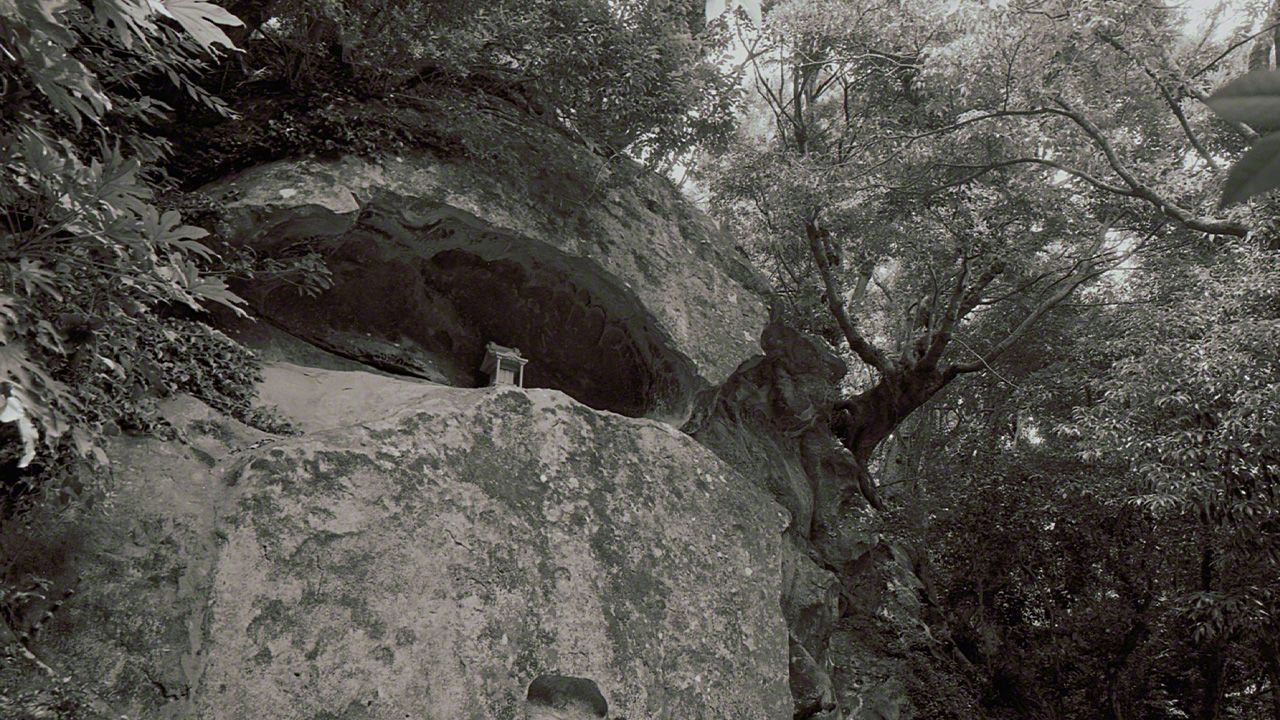
A Pilgrimage in Black and White
In the Footsteps of Jinmu, Japan’s Legendary First Emperor
Guideto Japan
Images Travel- English
- 日本語
- 简体字
- 繁體字
- Français
- Español
- العربية
- Русский
The Spear Cave and the National Foundation Myth
Miyazaki Prefecture in eastern Kyūshū, once known as Hyūga (literally meaning “sunward”), has close associations with the age of the gods and the legendary beginnings of Japan as a nation. Legend tells how Ninigi-no-mikoto, grandson of the sun goddess, came to earth at Takachiho, and tales link his sons Hoori and Ugaya-fukiaezu to other locations along the Miyazaki coast. The conclusion of the saga centers on a figure from the fourth generation after Ninigi: Kamu-Yamato Iware-biko, who set forth from Kyūshū to establish his rule over the land of Yamato, in modern Nara Prefecture. This “Eastward Expedition” traditionally marks the beginning of Japan as a nation, and Jinmu is revered as the legendary first tennō, or emperor, of Japan.
The Komamiya shrine in Nichinan, farther down the coast from Miyazaki and Aoshima, is reputed to stand on the site of a palace where Jinmu spent his childhood years. Within the shrine precincts, a sacred stone (iwakura) marks the place where Emperor Jinmu left a spear as an offering before setting out on his expedition of conquest.
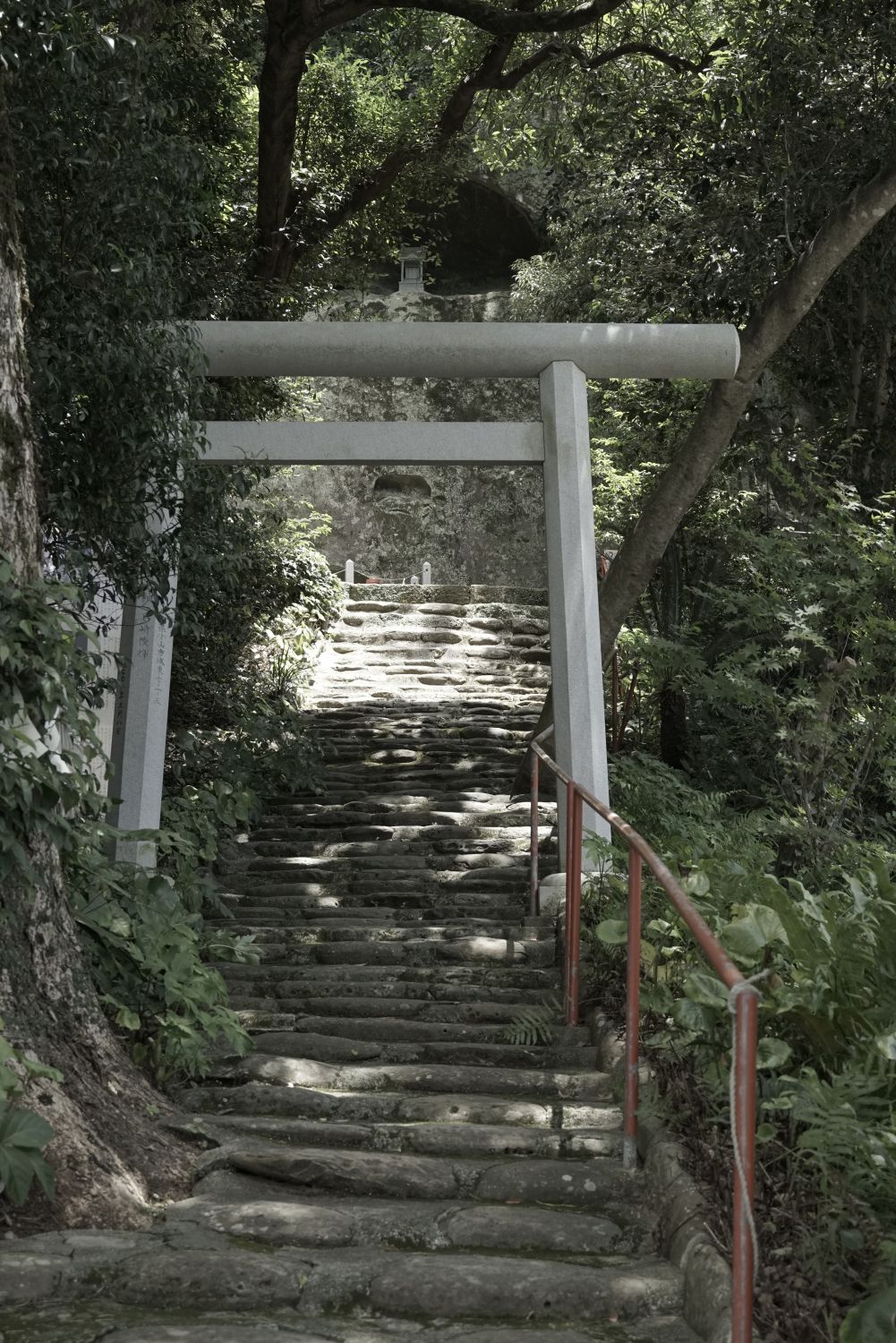
A series of steep stone steps leads up to the Mihoko no Iwakura. (© Ōsaka Hiroshi)
Stone stairs lead up from the side of the main shrine building, or honden. At the top stands a mighty rock some 8 meters high and 5 meters across. A deep crevice-like crack runs across the upper part of the rock, like the open maw of a beast howling at the sky. Trees stand around the rock, rustling in the breeze, sunlight filtering through the leaves—a fittingly evocative atmosphere for a place that has been regarded as sacred since the dawn of Japanese history.
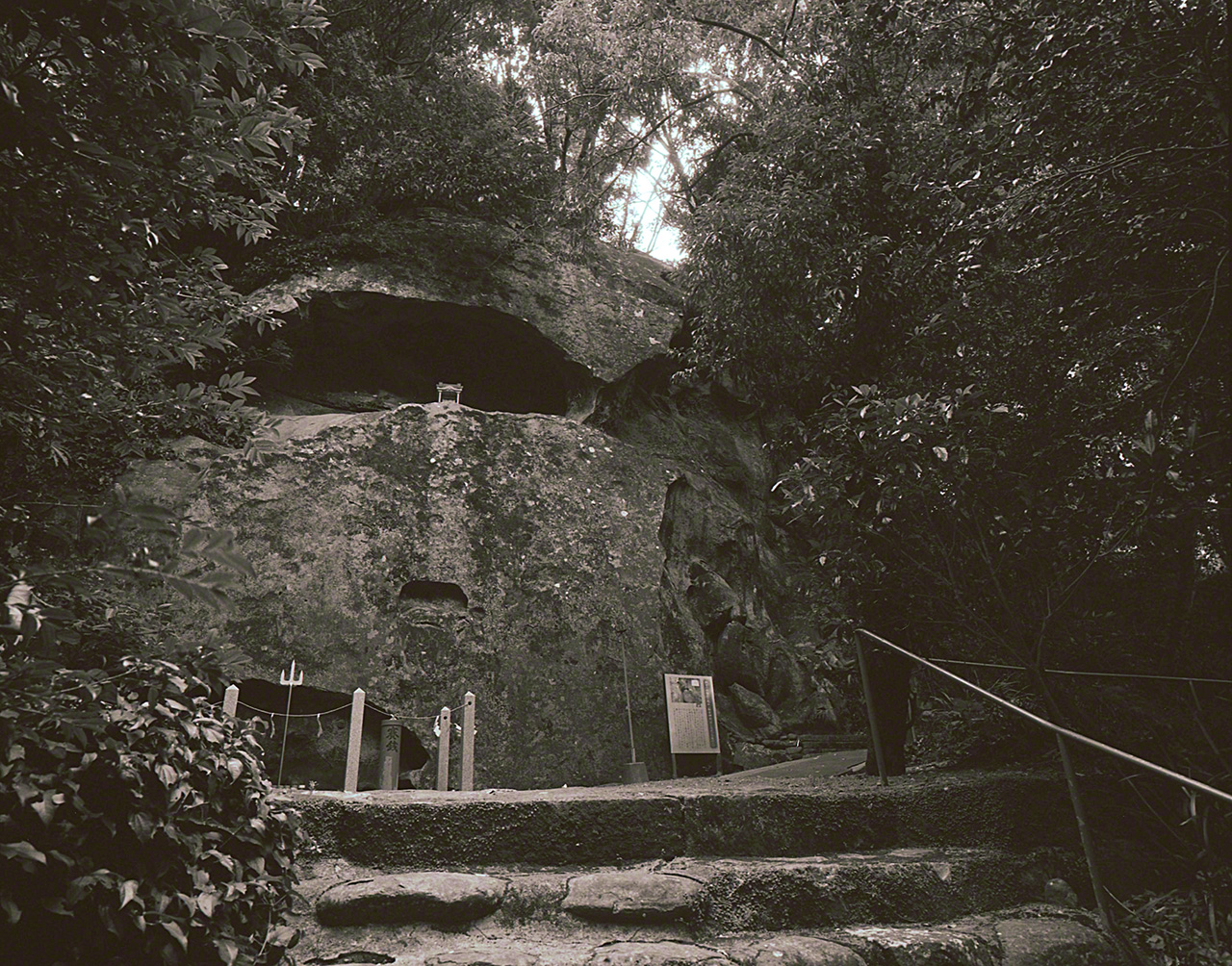
The Dragon God of the sea has also been known to put in appearances here. (© Ōsaka Hiroshi)
The coastline has shifted considerably since prehistoric times. This spot originally stood on the shore, and the slit in the rock was carved into the cliff face by the waves. In ancient times, people used to revere rocks and trees as yorishiro: places that could draw down the kami and make them manifest in the human world. Such places were important focal points of worship, and it is likely that this giant rock too was used for ceremonial purposes. Local tradition claims that Jinmu visited the rock before setting out on his journey. He left his favorite spear as an offering, praying for success in his expedition to unite the country—the legendary founding of Japan still celebrated as National Foundation Day on February 11.

Standing statue of Emperor Jinmu in front of the haiden. (© Ōsaka Hiroshi)
Komamiya Jinja
- Enshrined deity: Jinmu Tennō, the legendary “first emperor” of Japan
- Address: Hirayama 1095, Nichinan, Miyazaki Prefecture
This is an ancient shrine, with records suggesting it was founded during the Asuka Period (593–710), in 697. Koma is a word meaning “horse” or “foal.” When Jinmu set out on his journey of conquest, he released his favorite horses into a meadow around four kilometers north of this place. Several stone horse statues can be seen in the shrine today.
The Standing Stone where Jinmu Prayed for the Success of the Eastward Expedition
The place from which Jinmu set out on his Eastward Expedition is said to lie in Mimitsu, now part of the city of Hyūga in the northeastern part of the prefecture.
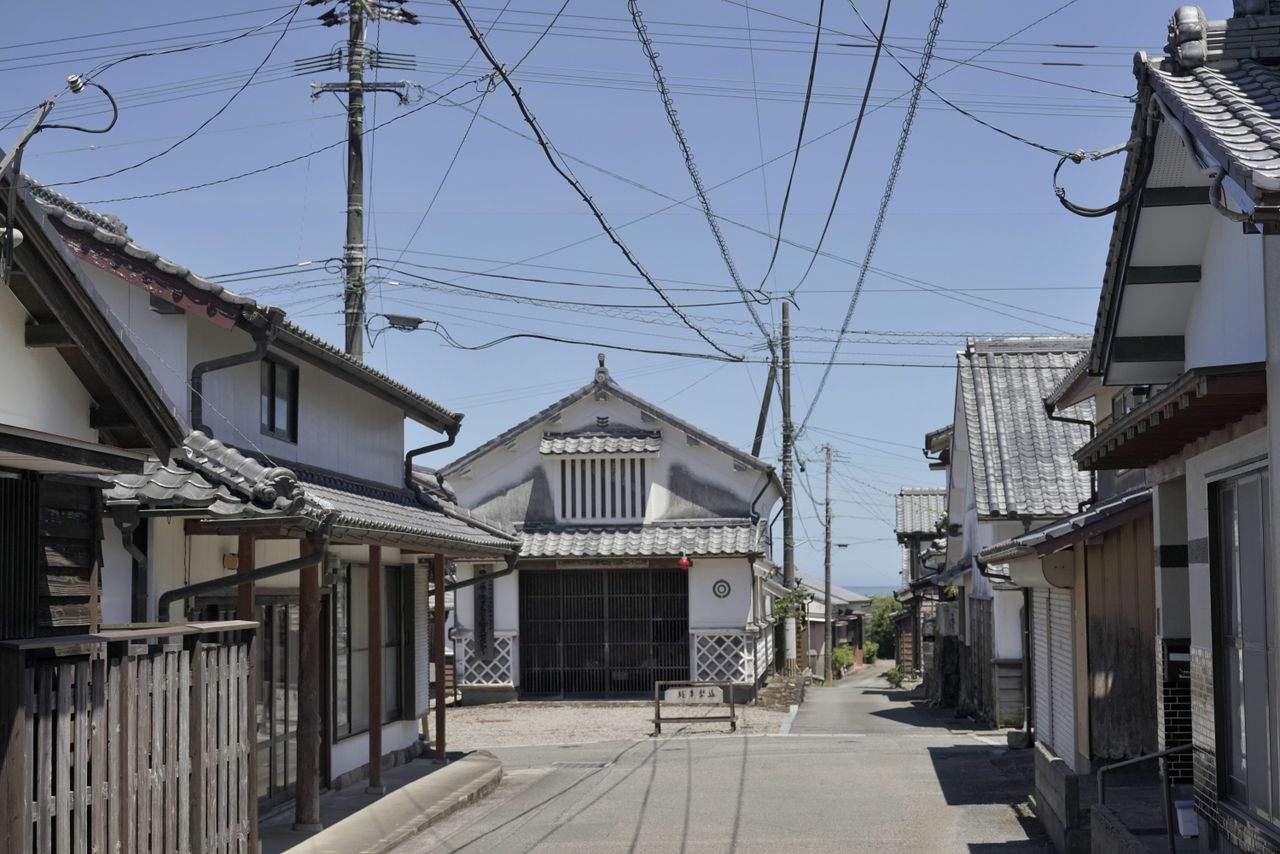
The port area of Mimitsu is a national preservation district for historically important buildings. (© Ōsaka Hiroshi)
Mimitsu was known from early times for its excellent natural harbor, and from the Edo Period (1603–1868) until the early decades of the twentieth century the town prospered as an important entrepot and distribution center. The area around the port was a hubbub of activity, lined with ship chandlers and merchants of every description. This bustling whirl of trade and activity gave rise to the phrase Mimitsu senken, the “thousand shops of Mimitsu.” That era has long since passed, but the imposing earthen-floor entrances and thick beams of the merchant houses are vivid reminders of those days of commerce and vibrancy. As I stroll the quiet streets, a gentle breeze blowing in from the sea, it is easy to imagine how the district might have looked centuries ago.
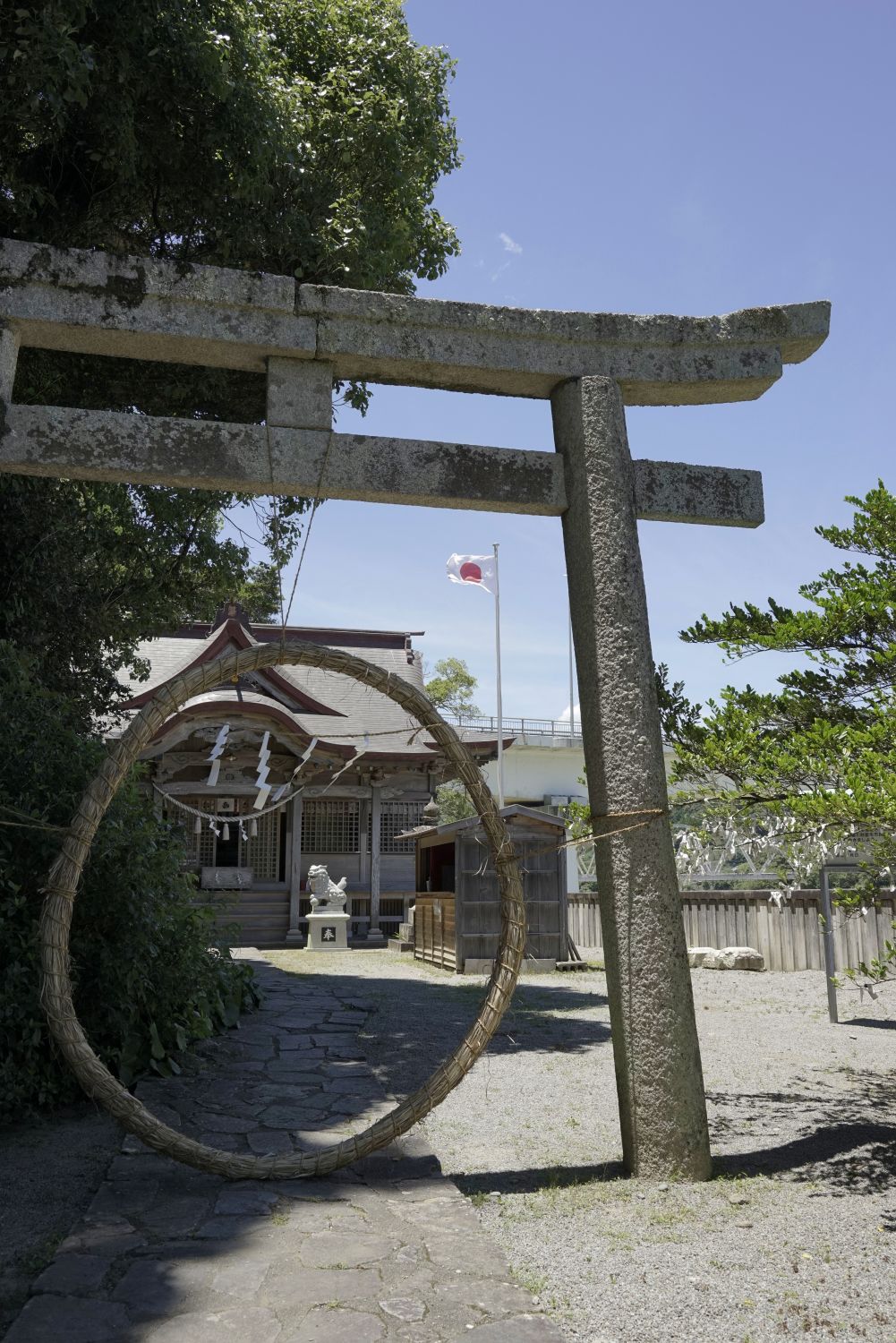
Tateiwa Shrine. (© Ōsaka Hiroshi)
Close to the river, where the old streets come to an end, stands the Tateiwa (Standing Stone) shrine. The mighty iwakura that gives the shrine its name is found behind the main shrine building: 8 meters high and some 15 meters across. Straight cracks run vertically up the giant rock. These are caused by a geological phenomenon known as columnar jointing, which happens when lava cools and hardens, creating vertical fractures that shape the rock into columns. Formed by volcanic activity some 15 million years ago, these column-like structures are a common feature among the cliffs and bluffs in this area. In the legend, Jinmu visited this rock before setting out on his expedition to pray for a safe journey and victory in battle.
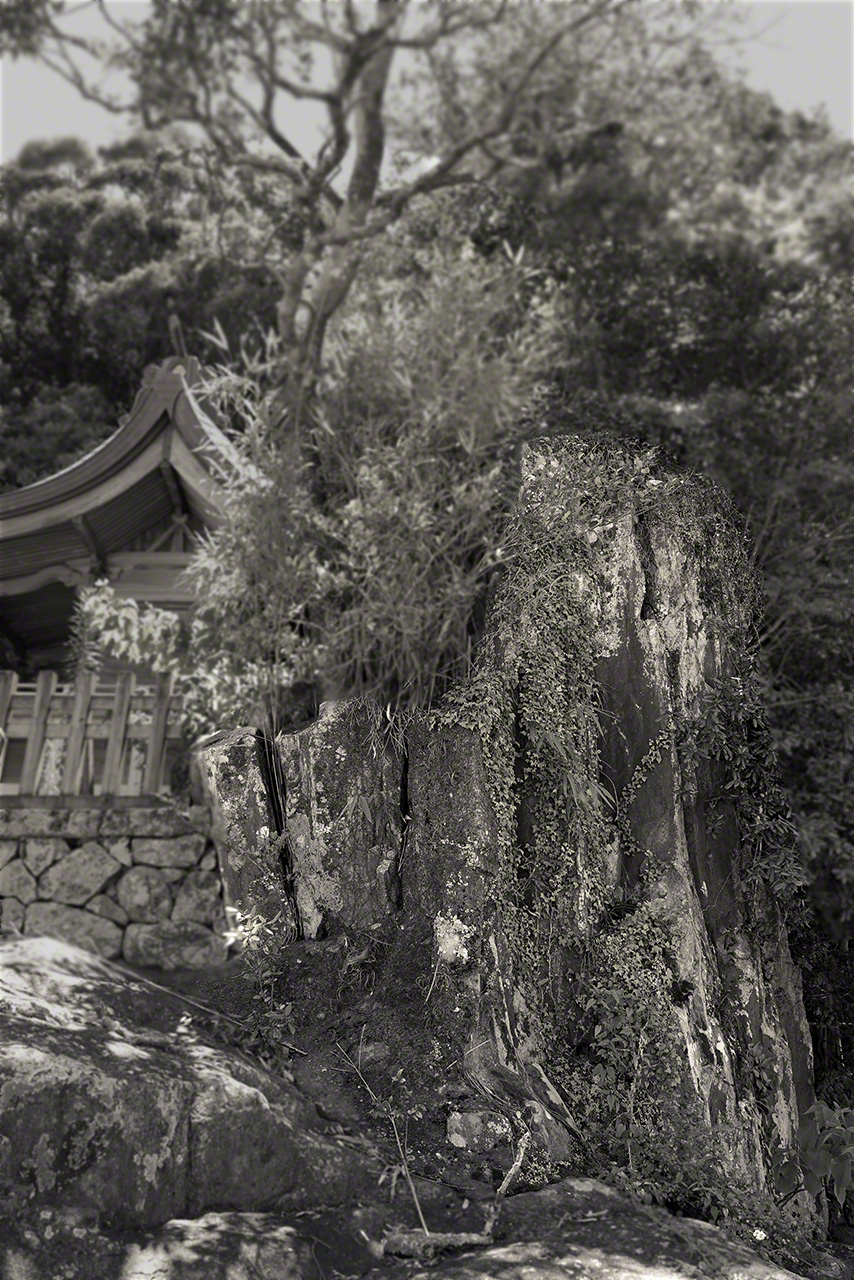
The tateiwa (standing stone) behind the main shrine building. (© Ōsaka Hiroshi)
Legend has it that Jinmu’s fleet set sail on the first day of the eighth month. Jinmu had moved forward his departure, setting off before dawn to catch favorable winds. People knocked on the doors to rally their neighbors to see him off on his voyage, shouting okiyo, okiyo (wake up, wake up!). This legend lives on in the Okiyo-matsuri today, when children run through the neighborhood to wake the slumbering residents, keeping the story of Jinmu’s legendary exploits alive. Although Jinmu was almost certainly a figure of myth, his legend still endures today, celebrated across Japan—and nowhere more fondly than along the “sun-blessed” shores of Kyūshū, from where he set forth to conquer new lands.
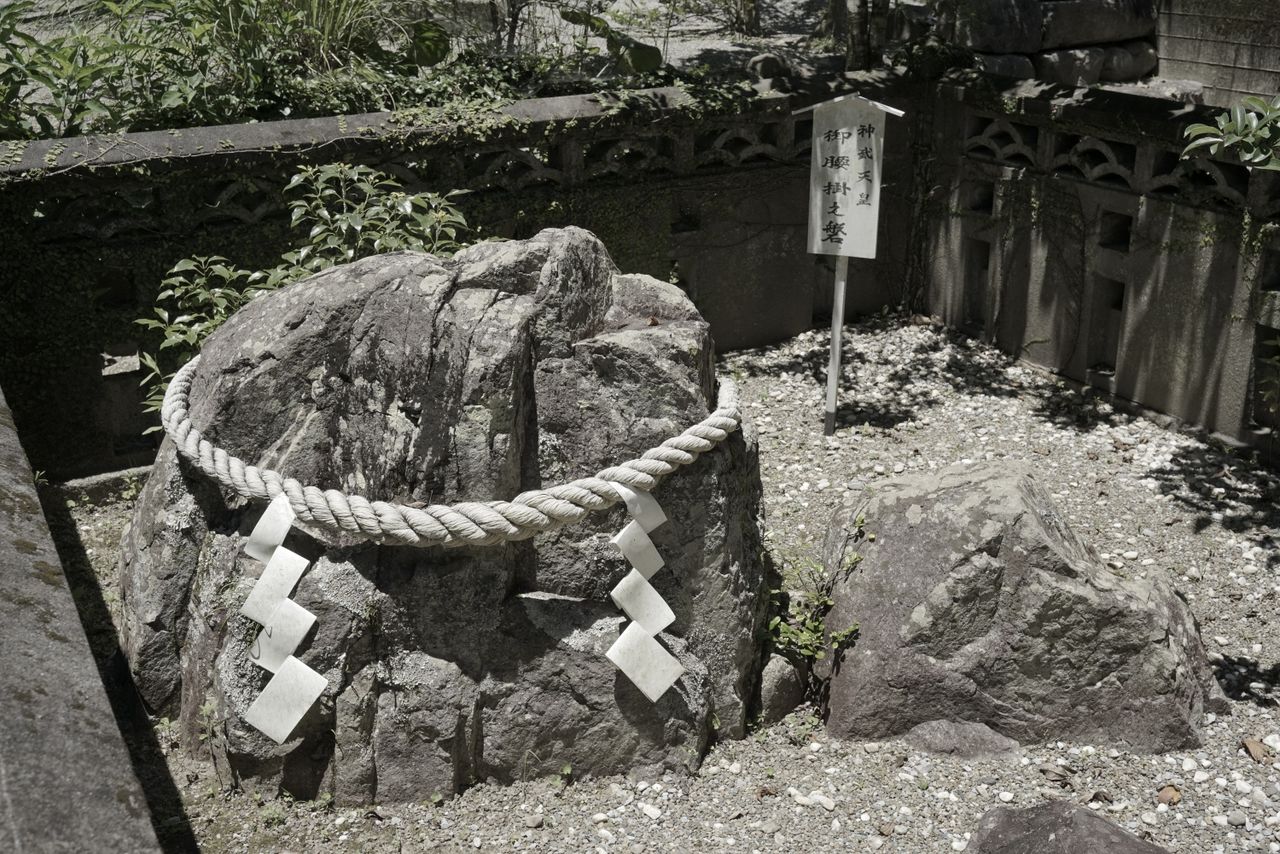
This sacred spot inside the shrine precincts is said to mark the spot place where Jinmu rested during preparations for his departure to the east. (© Ōsaka Hiroshi)
Tateiwa Jinja
- Enshrined deities: Soko-zutsu-no-o no Mikoto, Naka-tsutsu-no-o no Mikoto, Uwa-tsutsu-no-o no mikoto, Jinmu Tennō
- Address: 3419 Mimitsu, Hyūga, Miyazaki Prefecture
According to tradition, the shrine was founded during the reign of Keikō, the legendary twelfth emperor, in honor of the legend that Jinmu prayed here to the Three Sumiyoshi Deities who guard the seas before setting out on his Eastward Expedition.
(Originally published in Japanese. Text and editing by Kitazaki Jirō. Banner photo: The Mihoko no Iwaya, or “spear cave,” where Jinmu is said to have left his spear at Komamiya Jinja. © Ōsaka Hiroshi.)
